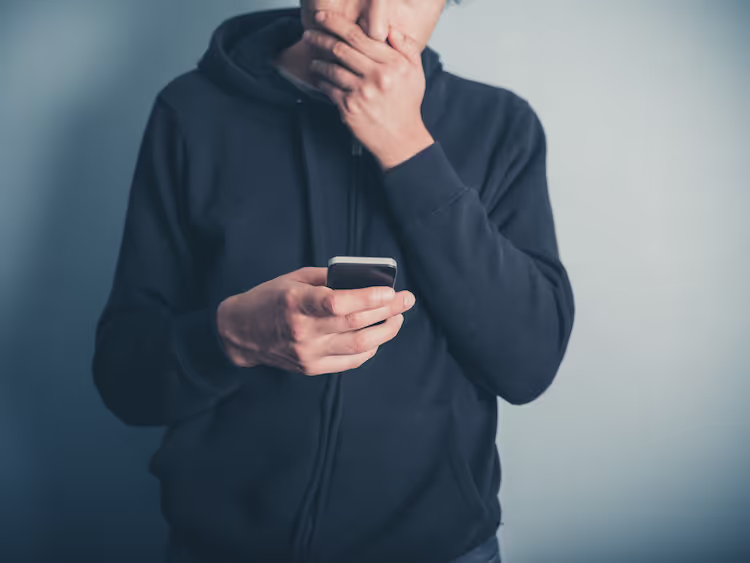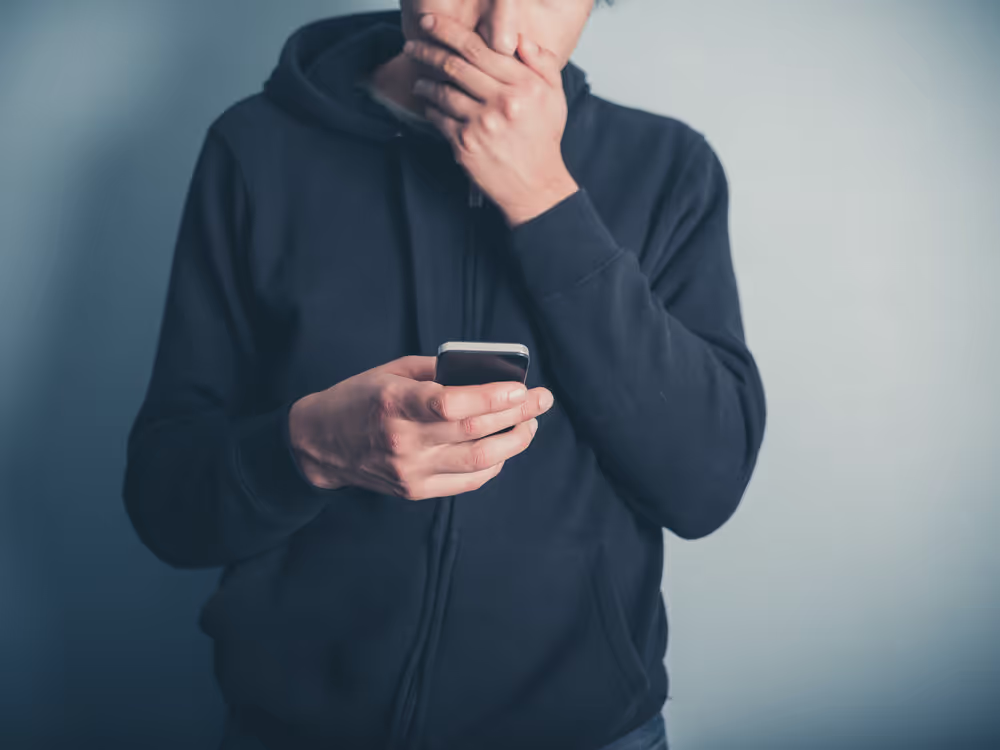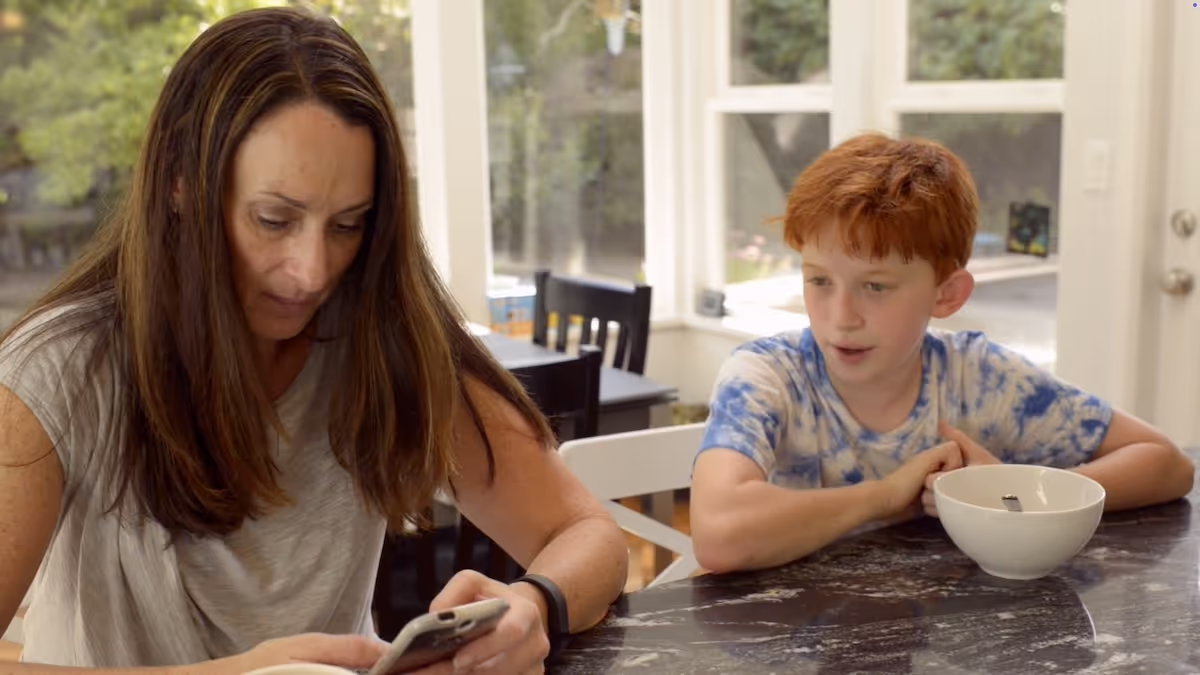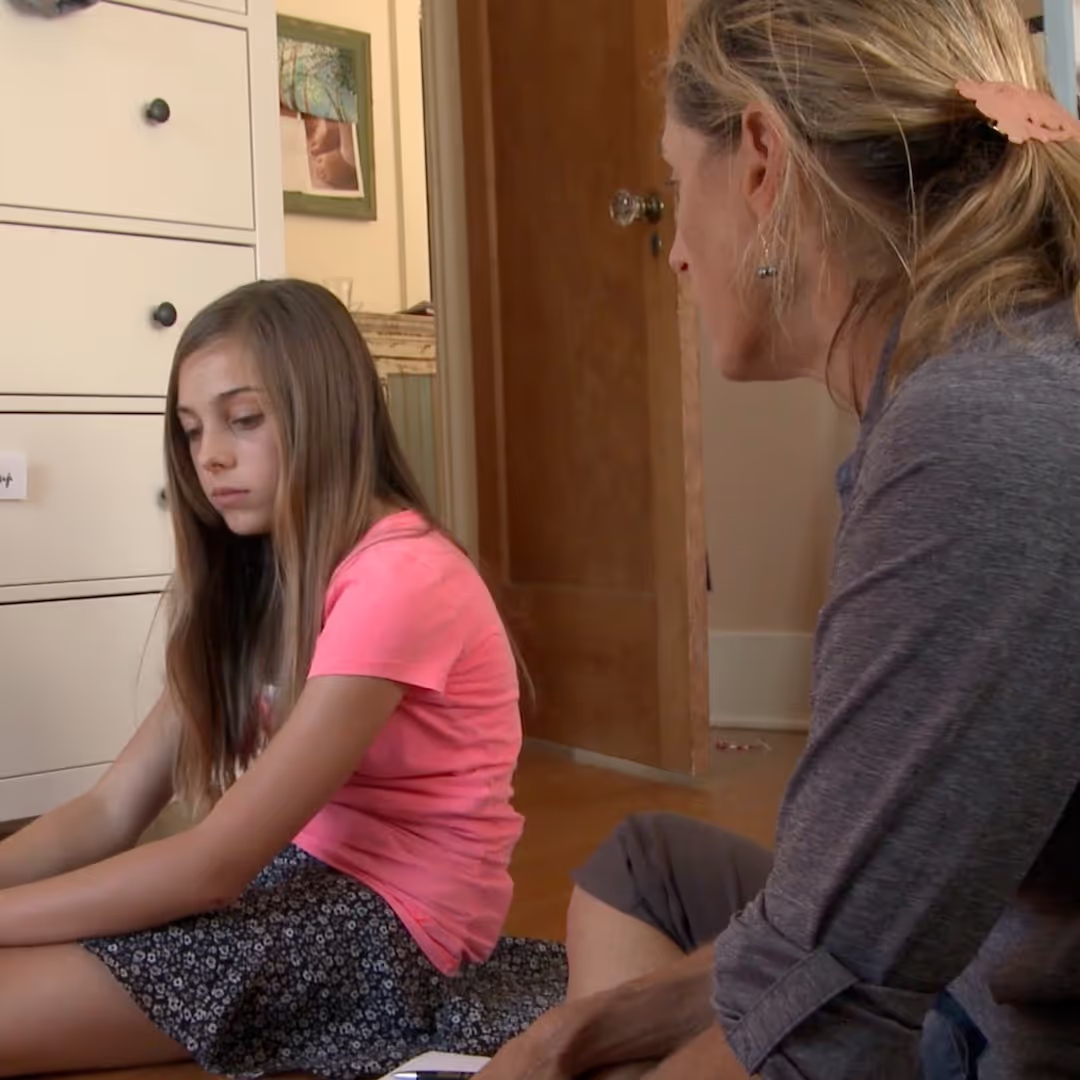



All of us here at Screenagers have teens and tweens. Lisa, my co-producer of Screenagers, has a son in college in Pittsburgh, so she got alerts from him right away about the shooting. When her daughter woke up, Lisa immediately told her about the incident. Lisa said, “I wanted to tell her about what was going on before she saw it on social media or got a text from one of her friends concerned for her brother.” The digital age makes it key that we get in front of these conversations quickly.
The president of the American Psychological Association (APA), Jessica Henderson Daniel, Ph.D., says in response to Pittsburgh's shootings that “Hate crimes are the most extreme expression of prejudice. Compared to other crimes, hate crimes have a more destructive impact on victims and communities because they target core aspects of our identity as human beings.”
I find the American Psychological Association’s guide to talking to your kids about the difficult news to be helpful. They, as do I, encourage parents to share their feelings with their children. It is not about burdening them with one’s anxiety or sadness or other emotions. It is about naming feelings and discussing them. This approach has been shown to be highly effective in helping youth develop greater emotional intelligence.
The APA says “It is OK to acknowledge your feelings with your children. They see you are human. They also get a chance to see that even though you are upset, you can pull yourself together and continue on.”
Psychologists generally say that small children, less than 5 years old, do not need to be told about these types of events. But, young kids now have such easy access to information on devices so we need to be mindful that they might be seeing much more than we know.
For older kids, the APA recommends: “Tell the truth. Lay out the facts at a level they can understand. You do not need to give graphic details.”
I believe it is important that we all make sure kids know how rare these tragedies are. In homes where news is on a lot, or where news alerts are readily visible on screens, youth get an inaccurate perspective of the frequency with which tragedies occur. Yes, bad things happen, but the key is letting our children know that for every negative thing, there are thousands of positive things happening. And, be sure at the end of the conversations that you reassure them that they are safe and that you are there for them to talk further.
For this TTT, let's talk about difficult news. Here are some questions you may find useful.
Now Available for Educators: A New Professional Development Resource
Thousands of schools around the world have presented Screenagers to their students, staff, and families, and many tell us they are committed to continuing the conversation around supporting screen time balance for their students. Educators can now access the film plus a 3-part Professional Development series developed by Learners Edge and Screenagers to dramatically impact the culture of learning in your school. Request more information about this 6-hour ready-to-use Professional Development module.
As well as our weekly blog, we publish videos like this one every week on the Screenagers YouTube channel
Learn more about showing our movies in your school or community!
Join Screenagers filmmaker Delaney Ruston MD for our latest Podcast

Learn more about our Screen-Free Sleep campaign at the website!
Our movie made for parents and educators of younger kids
Learn more about showing our movies in your school or community!
Learn more about showing our movies in your school or community!
Join Screenagers filmmaker Delaney Ruston MD for our latest Podcast

Learn more about our Screen-Free Sleep campaign at the website!
Our movie made for parents and educators of younger kids
Join Screenagers filmmaker Delaney Ruston MD for our latest Podcast
As we’re about to celebrate 10 years of Screenagers, we want to hear what’s been most helpful and what you’d like to see next.
Please click here to share your thoughts with us in our community survey. It only takes 5–10 minutes, and everyone who completes it will be entered to win one of five $50 Amazon vouchers.

All of us here at Screenagers have teens and tweens. Lisa, my co-producer of Screenagers, has a son in college in Pittsburgh, so she got alerts from him right away about the shooting. When her daughter woke up, Lisa immediately told her about the incident. Lisa said, “I wanted to tell her about what was going on before she saw it on social media or got a text from one of her friends concerned for her brother.” The digital age makes it key that we get in front of these conversations quickly.
The president of the American Psychological Association (APA), Jessica Henderson Daniel, Ph.D., says in response to Pittsburgh's shootings that “Hate crimes are the most extreme expression of prejudice. Compared to other crimes, hate crimes have a more destructive impact on victims and communities because they target core aspects of our identity as human beings.”
I find the American Psychological Association’s guide to talking to your kids about the difficult news to be helpful. They, as do I, encourage parents to share their feelings with their children. It is not about burdening them with one’s anxiety or sadness or other emotions. It is about naming feelings and discussing them. This approach has been shown to be highly effective in helping youth develop greater emotional intelligence.
The APA says “It is OK to acknowledge your feelings with your children. They see you are human. They also get a chance to see that even though you are upset, you can pull yourself together and continue on.”
Psychologists generally say that small children, less than 5 years old, do not need to be told about these types of events. But, young kids now have such easy access to information on devices so we need to be mindful that they might be seeing much more than we know.
For older kids, the APA recommends: “Tell the truth. Lay out the facts at a level they can understand. You do not need to give graphic details.”
I believe it is important that we all make sure kids know how rare these tragedies are. In homes where news is on a lot, or where news alerts are readily visible on screens, youth get an inaccurate perspective of the frequency with which tragedies occur. Yes, bad things happen, but the key is letting our children know that for every negative thing, there are thousands of positive things happening. And, be sure at the end of the conversations that you reassure them that they are safe and that you are there for them to talk further.
For this TTT, let's talk about difficult news. Here are some questions you may find useful.
Now Available for Educators: A New Professional Development Resource
Thousands of schools around the world have presented Screenagers to their students, staff, and families, and many tell us they are committed to continuing the conversation around supporting screen time balance for their students. Educators can now access the film plus a 3-part Professional Development series developed by Learners Edge and Screenagers to dramatically impact the culture of learning in your school. Request more information about this 6-hour ready-to-use Professional Development module.
As well as our weekly blog, we publish videos like this one every week on the Screenagers YouTube channel
Sign up here to receive the weekly Tech Talk Tuesdays newsletter from Screenagers filmmaker Delaney Ruston MD.
We respect your privacy.

All of us here at Screenagers have teens and tweens. Lisa, my co-producer of Screenagers, has a son in college in Pittsburgh, so she got alerts from him right away about the shooting. When her daughter woke up, Lisa immediately told her about the incident. Lisa said, “I wanted to tell her about what was going on before she saw it on social media or got a text from one of her friends concerned for her brother.” The digital age makes it key that we get in front of these conversations quickly.
The president of the American Psychological Association (APA), Jessica Henderson Daniel, Ph.D., says in response to Pittsburgh's shootings that “Hate crimes are the most extreme expression of prejudice. Compared to other crimes, hate crimes have a more destructive impact on victims and communities because they target core aspects of our identity as human beings.”
I find the American Psychological Association’s guide to talking to your kids about the difficult news to be helpful. They, as do I, encourage parents to share their feelings with their children. It is not about burdening them with one’s anxiety or sadness or other emotions. It is about naming feelings and discussing them. This approach has been shown to be highly effective in helping youth develop greater emotional intelligence.
The APA says “It is OK to acknowledge your feelings with your children. They see you are human. They also get a chance to see that even though you are upset, you can pull yourself together and continue on.”
Psychologists generally say that small children, less than 5 years old, do not need to be told about these types of events. But, young kids now have such easy access to information on devices so we need to be mindful that they might be seeing much more than we know.
For older kids, the APA recommends: “Tell the truth. Lay out the facts at a level they can understand. You do not need to give graphic details.”
I believe it is important that we all make sure kids know how rare these tragedies are. In homes where news is on a lot, or where news alerts are readily visible on screens, youth get an inaccurate perspective of the frequency with which tragedies occur. Yes, bad things happen, but the key is letting our children know that for every negative thing, there are thousands of positive things happening. And, be sure at the end of the conversations that you reassure them that they are safe and that you are there for them to talk further.
For this TTT, let's talk about difficult news. Here are some questions you may find useful.
Now Available for Educators: A New Professional Development Resource
Thousands of schools around the world have presented Screenagers to their students, staff, and families, and many tell us they are committed to continuing the conversation around supporting screen time balance for their students. Educators can now access the film plus a 3-part Professional Development series developed by Learners Edge and Screenagers to dramatically impact the culture of learning in your school. Request more information about this 6-hour ready-to-use Professional Development module.
As well as our weekly blog, we publish videos like this one every week on the Screenagers YouTube channel


Parenting in this digital age is full of challenges. I imagine many of you are nodding in agreement. And when we look for advice online, it can feel like a sea of perfect experts with perfect advice: “Just follow these three easy steps and everything will fall into place.” In this week’s blog, I share a story about a moment with my daughter Tessa that did not go quite as planned but ended up teaching us both something important.
READ MORE >
Wow! Summer really goes by fast, doesn’t it? Back-to-school is already here for some and not far away for others. Ahead of this school year, I’ve hand-picked four of our most useful blogs. Practical, timely guides to help you set your family up for a healthier, more balanced relationship with technology in the months ahead.
READ MORE >for more like this, DR. DELANEY RUSTON'S NEW BOOK, PARENTING IN THE SCREEN AGE, IS THE DEFINITIVE GUIDE FOR TODAY’S PARENTS. WITH INSIGHTS ON SCREEN TIME FROM RESEARCHERS, INPUT FROM KIDS & TEENS, THIS BOOK IS PACKED WITH SOLUTIONS FOR HOW TO START AND SUSTAIN PRODUCTIVE FAMILY TALKS ABOUT TECHNOLOGY AND IT’S IMPACT ON OUR MENTAL WELLBEING.
